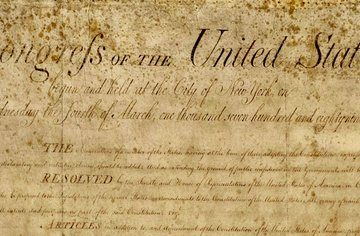Many of the rights and liberties which Americans cherish—such as freedom of speech, religion, and due process of law—were not enumerated in the original Constitution drafted at the Philadelphia Convention in 1787, but were included in the first ten amendments, known as the Bill of Rights.
In 1941 U.S President Franklin D. Roosevelt established Bill of Rights Day, the annual observance of the ratification of the first ten Amendments to our Constitution on December 15, 1791. This year we celebrate the 231st Anniversary.
Massachusetts, Connecticut, and Georgia finally ratified the Bill of Rights in 1939, the 150th anniversary of the Constitution.
James Madison originally drafted 19 amendments to the Constitution in 1789. The House of Representatives narrowed them down to 17. The Senate then narrowed them down to 12. Upon review, states decided to reject the first two amendments regarding the pay of Congress and the number of seats in the House, thus leaving 10 remaining. These 10 would go onto to be known as the Bill of Rights.
Our Constitution might never have been ratified without the promise of the Bill of Rights. It was written to address the objections raised by Anti-Federalists. The Bill of Rights amendments add to the Constitution specific guarantees of personal freedoms and rights that were a condition for many of the signatories.
Fourteen handwritten copies of the Bill of Rights were made, one for Congress and one for each of the original 13 states. The copies for Georgia, Maryland, New York and Pennsylvania went missing. Two unidentified copies of the missing four, thought to be those of Georgia and Maryland, survive. One is in the National Archives and the other is in the New York Public Library.
The Bill of Rights represents the first step that “We the People” took in amending the Constitution “in Order to form a more perfect Union.” The original, unamended Constitution was a remarkable achievement, establishing a revolutionary structure of government that put power in the hands of the people. The Bill of Rights built on that foundation, protecting our most cherished American freedoms. For more than two centuries we have exercised, restricted, expanded, tested, and debated those freedoms as the Bill of Rights has shaped and been reshaped by what it means to be American.
Read more about the Bill of Rights at the National Archives The Bill of Rights | National Archives

